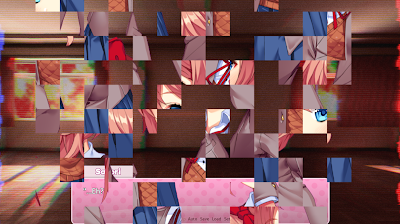 Hello!
Hello!In September, I started my first quarter at the Pacific Northwest Film Scoring program under Dr. Hummie Mann. For our first weekend, I and four other students in the program attended the Port Townsend Film Festival located in (obviously) Port Townsend, WA, on a peninsula west of downtown Seattle. Our mission was to attend four films, two filmmaker panels, and a Q&A with film composer John Bayman, so it turned out to be packed weekend before returning for our next week of classes.
Port Townsend is a very "nostalgic" town that hosts many festivals throughout the year. The main street, "Water Street", runs along the shores of the West Puget Sound, and contains various oddities shops, bookstores, and of course several theaters and museums that house the films that are screened throughout the various festivals.
Once a year, a film festival takes place here that features shorts and feature films submitted from around the world. Documentaries and Narrative Documentaries are most prominent, with some dramas included. In addition to the screenings, various panels are offered with discussions with the film makers, including the producers and writers.
 Furthermore, my classmates and I were able to attend a Q&A with John Bayman, who scored an excellent 80-minute soundtrack for the 1926 silent film "Eye of the Totem", which is a story about Native Americans in Tacoma in the 1920's. Sadly I was unable to attend the viewings, but we had an informative discussion about scoring films and the industry attached to it.
Furthermore, my classmates and I were able to attend a Q&A with John Bayman, who scored an excellent 80-minute soundtrack for the 1926 silent film "Eye of the Totem", which is a story about Native Americans in Tacoma in the 1920's. Sadly I was unable to attend the viewings, but we had an informative discussion about scoring films and the industry attached to it.I watched four films over the weekend:
 -Active Measures
-Active Measures-Don't Be Nice
-Of Dust and Bones
-The Drummer and the Keeper
In short, my responses are as follows:
Active Measures, directed by Jack Bryan, is a documentary about the Russian interference in the United State's 2016 presidential election. It included backstory about the connections between the current administration's personal interests and the Russian KJB and their leader. More interestingly, it added contextual information regarding Russian's interference with countries such as Georgia and Ukraine. As this topic has become incredibly over-discussed due to omnipresent political news articles, I found the film to be wearying. The score (written by...) was very appropriate, however, with ambient music that added to the tension without overstating emotions.
Don't Be Nice, directed by Max Powers, turned out to be my favorite movie of the festival. It is a documentary about a group of Brooklyn poets who compete in "poetry slams", mainly highlighting African-American and queer perspectives and responses to the world's responses to their identities. They are pushed by a dynamic coach/leader, Lauren Whitehead, who asks them to dig deep inside and expose their own vulnerabilities. The score was minimalistic and soulful, with haunting, wordless vocals and plucked string sounds. Ultimately the film ended up winning the "Audience Choice Best Narrative Feature".
Of Dust and Bones, directed by Diane Bell, takes place in Joshua Tree, California, a barren landscape to which a widow, Clio, has receded after the death of her husband in Syria. His best friend comes to request the last remaining documentation that her husband took while in Syria, for publication. The visuals were bleak and honestly appeared to rely too much on the wide land of the desert for interest, but the sound editing was quite good. A similarly minimalistic score accompanied the film, but did not include enough background to make the film move faster or seem more interesting.
The Drummer and the Keeper, directed by Nick Kelly, was a film that I really would have liked to see win an award; unfortunately it did not. However, I felt that the overall quality of the film, including acting, directing, plot, and cinematography, was theater film level, and could easily build an audience simply based on how interesting the film was.
There were several other films that I would have enjoyed seeing, but unfortunately there was not enough time to see them all, and often the tickets were all gone before we had the opportunity to get them! Other films I hoped to see were:
-Soufra
-All the Wild Horses
-Sadie
-MadHattan
-Ayla: The Daughter of War
The festival had the feeling of a very energy-packed, see-it-or-miss-it opportunity, here in all its vibrance today, and tomorrow back to normal life. I'd enjoy returning again next year to see new offerings from rising filmmakers.
Thanks very much, Port Townsend!























